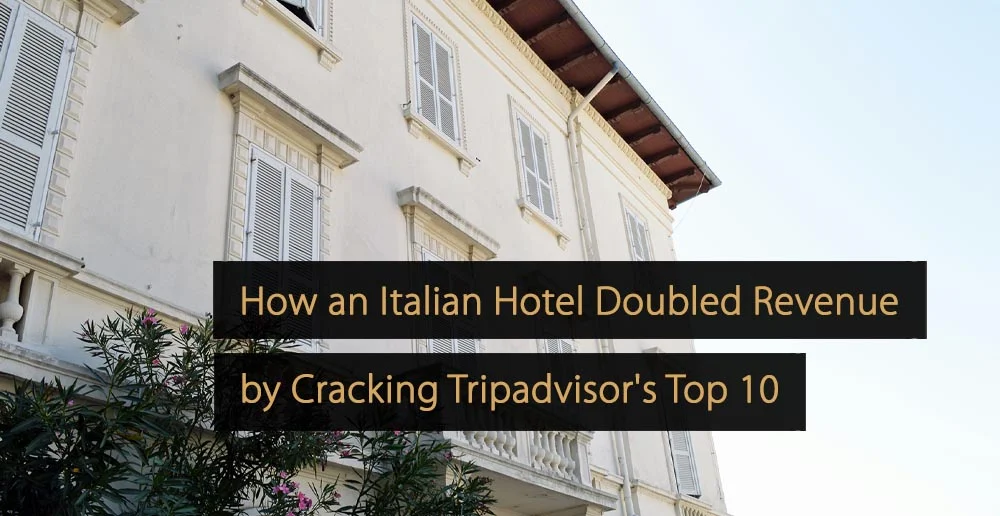Destination management is a broad process based on ensuring tourism benefits a particular destination. It is usually the responsibility of a destination management organization, or DMO for short. Over the course of this article, you will learn more about what a destination management organization is.
Table of Contents:
- What is Destination Management?
- What is a Destination Marketing Organization (DMO)?
- How Can a Destination Marketing Organization Add Value to Your Destination?
- 4 Steps to Execute Destination Management
- Destination Marketing Strategies
- Tourism Management: All You Need to Know About Tourism
What is Destination Management?
Destination management refers to a holistic approach, where many aspects of a destination are managed via a coordinated process. It can include managing marketing, local accommodation, tours, events, activities, attractions, and transportation, and it is often the responsibility of a dedicated destination management organization.
The aim is to ensure tourism has a net positive effect on the destination, which means maximizing the benefits through optimizing supply and demand. A destination management organization will typically be membership-based, with members including government figures, local businesses, and others in the travel industry.
What is a Destination Marketing Organization (DMO)?
A destination marketing organization is similar to a destination management organization, and the two terms are sometimes used interchangeably. However, in the case of a destination marketing organization, the focus is on promoting a destination, to make it more attractive to tourists, businesses, and other potential travelers.
A DMO may use various marketing techniques, including display advertising, content marketing, social media promotion, offline advertising, and experiential marketing. There are many different destination types, so destination marketing efforts may consist of country marketing, city marketing, or marketing a specific geographical region.
How Can a Destination Marketing Organization Add Value to Your Destination?
A destination marketing organization, or DMO, can help add value to your destination by developing a comprehensive promotional strategy. Individual stakeholders within the local tourism industry, such as hotels, travel companies, and other businesses, can contribute to this strategy, to attract more travelers.
Some of the specific responsibilities may include identifying key demographics most likely to want to visit the destination, developing compelling branding, and creating or devising specific marketing techniques aimed at the target audience(s). This can all serve to grow tourism and business investment.
4 Steps to Execute Destination Management
For a destination management organization looking to execute a management plan, it is best to break the strategy down into four main steps, which can broadly be described as place, people, product, and process.
When thinking about a place, it is important to clearly define the destination and understand why managing it holistically is beneficial. Meanwhile, in terms of people, you need to be clear on who is most likely to visit the destination and their main motivations. You should also know who your key destination management partners are.
The product refers to what your destination offers travelers and businesses looking to move into the area. A destination management organization will typically consider aspects like the overall travel experience and specifics like accommodation options, attractions, and local facilities.
Finally, the process stage involves determining precisely what actions need to be taken, to achieve the best possible results. This will mean taking the right steps to ensure the travel experience matches customer expectations.
In the article “Destination Management: How Tourism Adds Value to Your Destination”, you will be able to find out more about the overriding concept of destination management, the key responsibilities of a destination management organization (DMO), and the four steps organizations can follow to ensure tourism delivers real value to a destination.
Destination Marketing Strategies
Destination marketing forms a key part of wider DMO responsibilities, helping to make a destination stand out from alternatives and hold a unique appeal for potential travelers. However, marketing a destination is a complex process involving several different strategies, often simultaneously.
In the article “Destination Marketing Strategies to Attract More Visitors”, you will find a breakdown of some of the most important and effective strategies a destination marking organization can use to get results.
Tourism Management: All You Need to Know About Tourism
Tourism management encompasses almost all aspects of the tourism industry, as well as many of the activities associated with it. Tourism management includes management roles within the travel and hospitality industries, with examples including hotels, restaurants, transportation, travel agents, and tour operators.
In the article “Tourism Management: All You Need to Know About Tourism”, you will be able to learn more about tourism management, the various tourism management jobs that exist and what these roles entail.
A destination management organization usually comprises a group of travel industry stakeholders interested in optimizing tourism within a particular destination. Its responsibilities may include defining the destination and its boundaries, promoting it to travelers, and ensuring it offers unique value.
More Tips to Grow Your Business
Revfine.com is the leading knowledge platform for the hospitality and travel industry. Professionals use our insights, strategies, and actionable tips to get inspired, optimize revenue, innovate processes, and improve customer experience.Explore expert advice on management, marketing, revenue management, operations, software, and technology in our dedicated Hotel, Hospitality, and Travel & Tourism categories.
This article is written by:
Hi, I am Martijn Barten, founder of Revfine.com. With 20 years of experience in the hospitality industry, I specialize in optimizing revenue by combining revenue management with marketing strategies. I have successfully developed, implemented, and managed revenue management and marketing strategies for individual properties and multi-property portfolios.









Leave A Comment